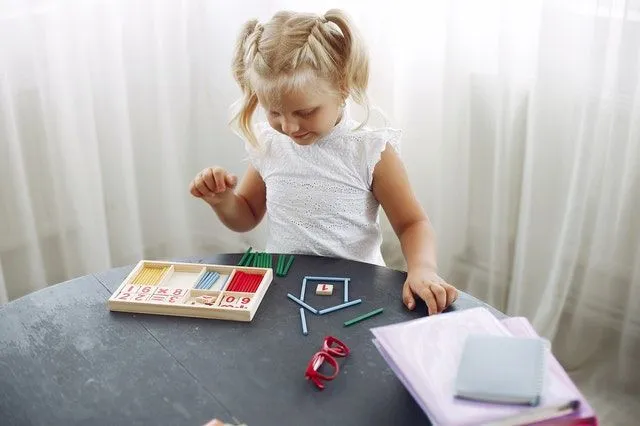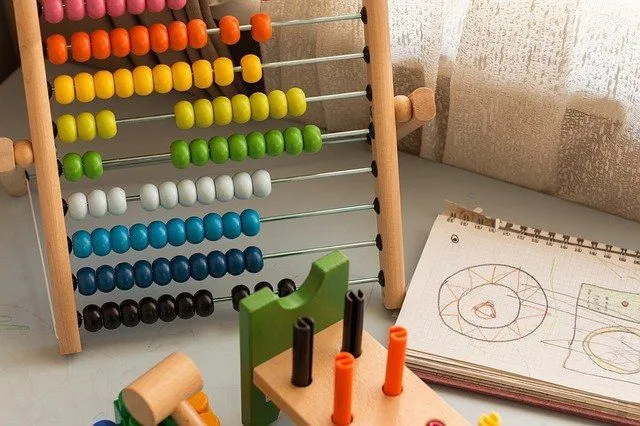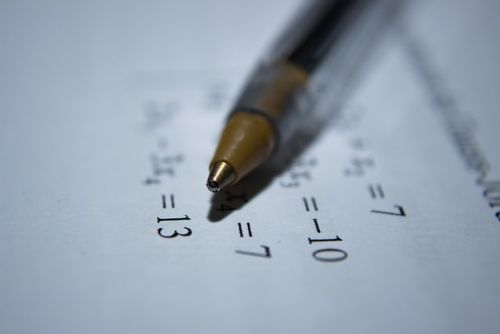FOR ALL AGES
Young children often use their fingers when learning how to add and subtract.
As they get older and you look to make them more proficient at doing sums automatically, doubles facts are an incredibly useful tool. Double facts in math are strategies that can help students learn to count like pros in no time.
The goal of doubles is that children will gain a real understanding of doubles maths and be able to use the facts flexibly to solve a range of problems.
These facts are great for grade one and grade two students to get their heads around adding and subtracting.
If you're looking for more great educational facts like this list of doubles facts for kids and parents, why not have a look at our water conservation facts and these African elephant facts.
A double is a number arrangement where the same number is added twice. Learn all about them with these doubles facts.
1. For example, a doubles fact is that the double of 2 is 4 because 2 + 2 = 4.
2. Doubles are a mathematical tool to help young children work towards being able to add numbers automatically.
3. Doubles games and using doubles facts are great for grade one and grade two students to help them understand addition and subtraction more easily.
4. To use doubling in math, you add the same number to itself. For example, the double of 5 is 10 because 5 + 5 = 10.
5. The double of 4 is 8 because 4 + 4 = 8.
6. Children who are able to remember doubles facts in math will be able to manipulate single-digit numbers more effectively and improve their ability to add and subtract.
7. You can practice doubles with flash cards, finger counting or simply by using doubles facts verbally.

Once your child understands and has memorized doubles facts, near doubles are a very useful way to take their addition and subtraction skills to the next level.
8. A near double is a maths sentence that is close to a doubles fact.
9. For example, 3 + 4 is a near double as it is just a single digit away from the doubles fact 3 + 3.
10. Near doubles draw on a core understanding of doubles facts, you then add or subtract one to get a final number.
11. For example, if a child has memorised doubling in maths, then, when asked the sum of numbers that are one more or less than doubles, such as 5 + 6 or 3 + 2, they can use doubles facts plus one (or minus one) to get their answer.
12. While children memorise double facts to make addition and subtraction easier, it is important that they understand and explore rather than memorise near doubles facts.
13. The goal of near doubles is to understand the doubles plus one or doubles minus one strategy conceptually so they can apply them to a range of examples rather than only the ones they have memorised.
14. If you hear your child saying things like "I used the doubles plus one strategy to solve this" but they can't remember what that was, then they probably need some more explaining to get their head around the concept of addition with doubles numbers.
Using doubles to add is one of the quickest ways to help your child understand addition facts better and become more automatic when adding single digit numbers.
15. There are basic doubles addition facts that will help your child use doubles to add.
16. Near doubles are also very helpful to use when teaching grade one and grade two students doubles addition.
17. If a child knows 9 + 9 = 18 then using this knowledge, they will understand that 9 + 8 will be one less. 18 - 1 =17.
You can also use doubles math to help your child understand subtraction. Learn how with these facts!
18. By remembering the doubles facts, a child can apply them to subtraction math equations.
19. For example, if the equation is 6 - 3, the child knows that the double of 3 is 6, so therefore, 6 - 3 = 3.
20. For more complicated subtraction, say 18 - 8, the child knows that the double of 8 is 16, and the difference between 16 and 18 is 2. Therefore, they know the answer will be the sum of 8 and 2, which is 10.

Creating visual math concepts that show the number doubles concept is a great way to help children understand these double factors in math. Doubles facts are easily represented using pictures. Using pictures or visual aids when teaching your child doubles facts can be incredibly helpful and will allow them to understand and apply the more easily. Get them familiar with these examples to begin with.
21. 1 + 1 = 2
22. 2 + 2 = 4
23. 6 + 6 = 12
24. 5 + 6 = 11
25. 9 + 8 = 17
26. 10 + 11 = 21
For more advanced kids, these doubles examples might be useful.
29. 10 boys were collecting leaves at a park. 10 girls were also collecting leaves at the park. How many children were collecting leaves in total? (20)
30. Mary has 5 cookies and Emma has 5 lollies, how many food items do Mary and Emma have in total? (10)
31. Half of X is the double of 5. What is x? (20)
32. Lily has 20 t-shirts in her cupboard. She decides to give 10 to charity. How many t-shirts does Lily have left in her cupboard? (10)
33. Write out double and near double facts that equal 10. (5 + 5 and 4 + 6 are the main ones)
34. Write out double and near doubles facts that equal 20. (10 + 10 and 11 + 9 are the main ones)
35. Emma and Bill found 5 shells each at the beach. How many shells in total do Emma and Bill have combined? Use images and words to explain your doubles fact. (10)
36. What is the sum of 5 + 6? If a child knows the double facts for 5, then they know the answer will be doubles plus one. 5+5 = 10 and then 10 + 1 = 11, so the answer is 11.
Here at Kidadl, we have carefully created lots of interesting family-friendly facts for everyone to enjoy! If you liked our doubles facts for kids and parents, then why not learn more with these spinosaurus facts and these hot air balloon facts.
Read The Disclaimer
At Kidadl we pride ourselves on offering families original ideas to make the most of time spent together at home or out and about, wherever you are in the world. We strive to recommend the very best things that are suggested by our community and are things we would do ourselves - our aim is to be the trusted friend to parents.
We try our very best, but cannot guarantee perfection. We will always aim to give you accurate information at the date of publication - however, information does change, so it’s important you do your own research, double-check and make the decision that is right for your family.
Kidadl provides inspiration to entertain and educate your children. We recognise that not all activities and ideas are appropriate and suitable for all children and families or in all circumstances. Our recommended activities are based on age but these are a guide. We recommend that these ideas are used as inspiration, that ideas are undertaken with appropriate adult supervision, and that each adult uses their own discretion and knowledge of their children to consider the safety and suitability.
Kidadl cannot accept liability for the execution of these ideas, and parental supervision is advised at all times, as safety is paramount. Anyone using the information provided by Kidadl does so at their own risk and we can not accept liability if things go wrong.
Kidadl is independent and to make our service free to you the reader we are supported by advertising.
We hope you love our recommendations for products and services! What we suggest is selected independently by the Kidadl team. If you purchase using the buy now button we may earn a small commission. This does not influence our choices. Please note: prices are correct and items are available at the time the article was published.
Kidadl has a number of affiliate partners that we work with including Amazon. Please note that Kidadl is a participant in the Amazon Services LLC Associates Program, an affiliate advertising program designed to provide a means for sites to earn advertising fees by advertising and linking to amazon.
We also link to other websites, but are not responsible for their content.
Was this article helpful?



Browse Category



We’ll send you tons of inspiration to help you find a hidden gem in your local area or plan a big day out.



Check your inbox for your latest news from us. You have subscribed to:
Remember that you can always manage your preferences or unsubscribe through the link at the foot of each newsletter.